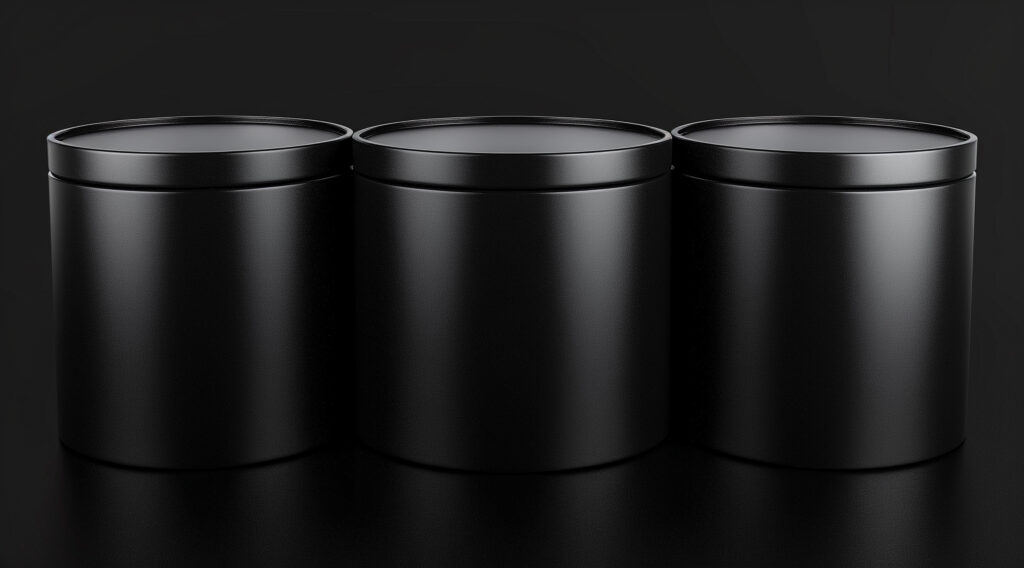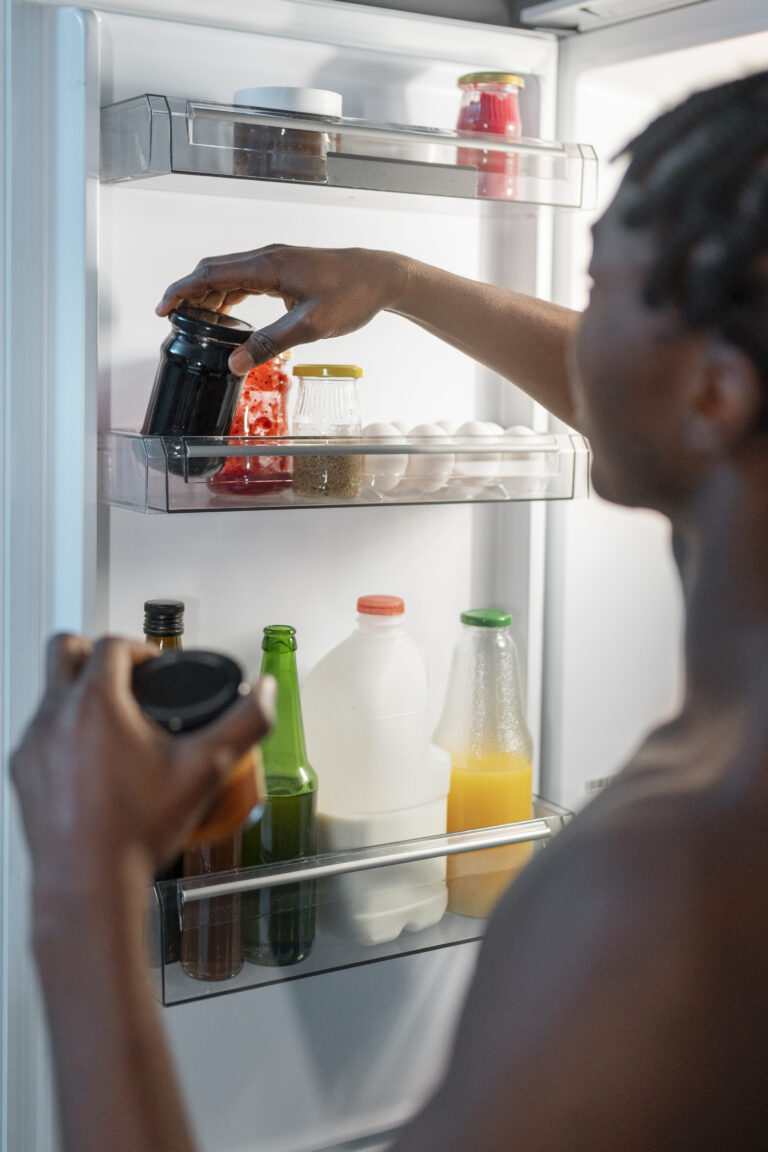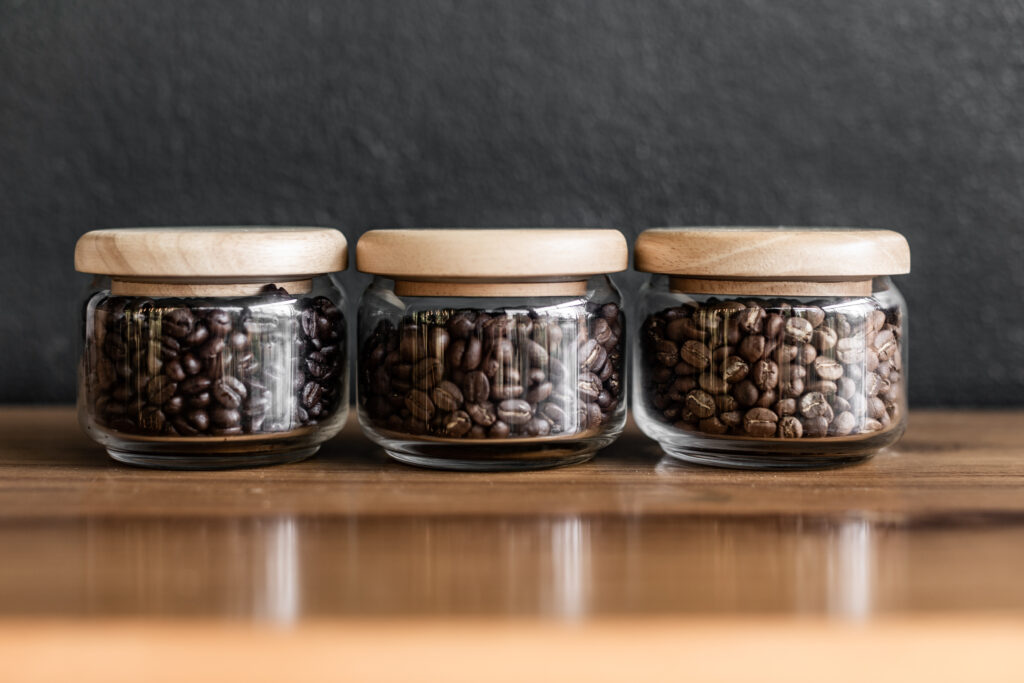Maximise the flavour of your coffee by storing your beans properly. Learn expert tips to protect your coffee from air, light, and moisture so that every cup tastes as fresh as the first.
Why proper coffee storage matters
Imagine opening a fresh bag of premium beans, grinding them, and brewing your favourite cup—only to find that the aroma is gone and the flavour is flat. This often doesn’t happen because the coffee is bad, but because it was improperly stored.
Coffee is a natural product rich in volatile compounds—oils and aromas that give each cup its unique character. These delicate elements begin to degrade shortly after roasting, especially when exposed to the enemies of freshness:
- Air (oxygen)
- Light
- Heat
- Humidity
Understanding how to store your beans correctly helps preserve flavor, extend shelf life, and get the most out of every brew—whether you use a French press, espresso machine, or moka pot.
Golden rules for storing coffee beans
1. Use an airtight, opaque container
Once a coffee bag is opened, the countdown begins. Exposure to oxygen causes oxidation, which dulls aroma and freshness. Choose a container that is:
- Airtight: to keep oxygen out
- Opaque: to protect from light
- Neutral: made from non-reactive materials like stainless steel or ceramic
Avoid clear containers or thin plastic boxes — even if they look nice, they can compromise freshness.
Pro tip: Containers with one-way CO₂ valves (like those used by professional roasters) are ideal — they release gas without letting air in.

2. Store in a cool, dark, and dry place
Light and heat are silent enemies of coffee. They destroy natural oils, leading to bitterness and loss of complexity.
Ideal storage locations:
- Inside a pantry or closed kitchen cupboard
- Away from ovens, stoves, and windows
- Away from sinks or dishwashers
Optimal temperature: 15–25 °C

3. Avoid the fridge (seriously!)
Many believe the fridge is a safe place for preserving freshness, but it actually introduces moisture and foreign odors that coffee absorbs like a sponge. Plus, constant temperature changes can create condensation inside the container.
Avoid both the fridge and freezer for short-term storage (under 2 weeks).
4. Freezing: only for long-term storage
If you’ve stocked up on specialty coffee and want to save some for later, freezing can be an option — but with caution:
- Divide beans into small, airtight containers or vacuum-sealed bags
- Label them with the roast date
- Thaw only what you’ll use in a week
- Never re-freeze beans once thawed — condensation affects quality
5. Buy smaller quantities
Even the best storage can’t beat freshness. Coffee tastes best within 2–8 weeks of roasting, so it’s smart to buy only what you’ll use within that time.
If you're using a home espresso machine, this is especially important, as a fresh cream relies heavily on bean freshness.
6. Grind right before brewing
Whole beans last longer than ground coffee. Grinding increases the surface area exposed to oxygen, which speeds up aroma loss. For maximum flavour and fragrance, grind just before you brew.
If you must store ground coffee, keep it in an airtight container and use it within a week.
Common coffee storage mistakes
Even seasoned coffee lovers can slip up:
- Leaving beans in open original packaging without sealing properly
- Using decorative glass jars that let in light
- Storing near spices or strongly scented foods
- Keeping coffee in the fridge “just in case”
- Forgetting about the bag and using it months after roasting
Recommended coffee storage containers
Investing in a good container pays off quickly in better taste. Here are some reliable options:
- Fellow Atmos Vacuum Canister – removes air by twisting the lid
- Airscape by Planetary Design – pushes air out with a plunger lid
- Coffeevac or Tightvac – budget-friendly containers with one-way valves
- Ceramic jars with a dark coating and silicone seal – simple and elegant
If your roastery provides bags with built-in valves and resealable closures, those can also work — just press out the air and seal tightly after each use.
In summary: what to do and what to avoid
|
✅ Do |
|
Use airtight, opaque containers |
|
Store in a cool, dark place |
|
Grind just before brewing |
|
Buy small amounts |
|
Freeze in portions only if needed |
|
❌ Avoid |
|
Keeping beans in open or clear bags |
|
Storing near heat or light sources |
|
Holding on to ground coffee for weeks |
|
Stockpiling for months |
|
Storing beans loosely in the freezer |
Final thought
Great coffee starts with quality beans — but stays great only if stored correctly. Think of coffee like fresh fruit or fine wine: how you store it directly affects what you experience in the cup.
By following these simple steps, you’ll enjoy richer aromas, fuller flavor, and the satisfaction that comes only with a truly fresh cup of coffee.



